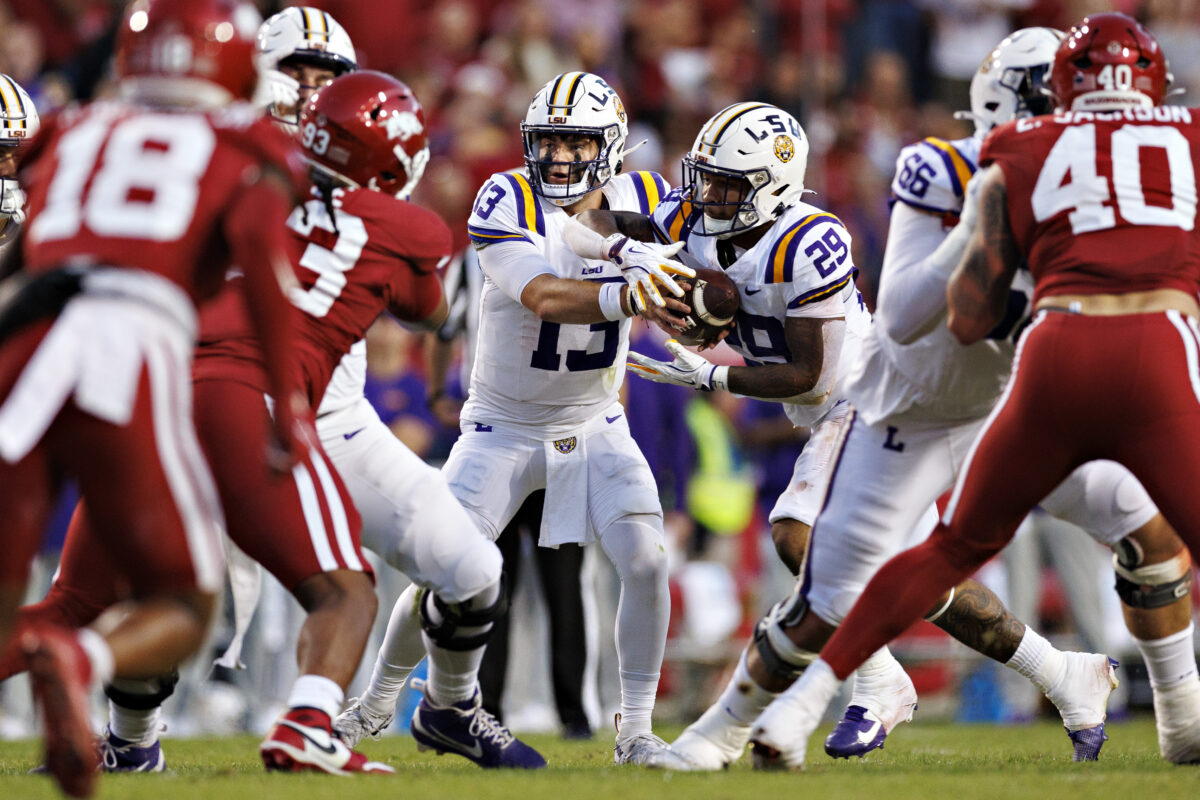LSU football saw changes at both coordinator positions in the offseason. It was a choice on the defensive side, with Brian Kelly firing Matt House and hiring Blake Baker.
On offense, Mike Denbrock took the Notre Dame job after building the best offense in the country at LSU. Hoping for continuity, LSU promoted from within. QBs coach Joe Sloan was hired as OC while WRs coach Cortez Hankton was named co-offensive coordinator.
The results are a mixed bag. LSU is nowhere close to producing at the level it did in 2023, but that wasn’t the expectation given all the talent lost. Still, LSU needs to be more consistent on offense. Brian Kelly knows it and has talked about bringing more balance, finishing drives, and cutting back on negative plays.
The offense was making progress earlier in the year while LSU got off to a 6-1 start, but a three-game losing streak is raising questions.
Today, we’ll look at the numbers to better understand LSU’s style and Sloan’s tendencies in year one as a playcaller.
Overall rush/pass balance
LSU is one of the most pass-heavy teams in America. The Tigers throw the ball 60.33% of the time — No. 6 nationally.
Garrett Nussmeier had dropped back 444 times. Only six QBs in the country have more.
There’s nothing inherently wrong with a passing-happy offense, but the lack of a run game puts a lot of pressure on Nussmeier. Kelly has spoken about wanting more balance.
At times, LSU could stand to establish the run more. But if you can’t run the ball, simply calling more run plays isn’t the answer.
Second and long rushing rate
How an OC handles second and 7 10 can tell you a lot about what an offense wants to do. Some teams view this as a time to let it rip. If you’re going to have to throw on third and long, why not give your QB two chances at it?
Other teams value setting up third and manageable. Both approaches can work.
LSU ranks 90th in second and long rushing rate this year, opting to run it 39% of the time.
First down tendencies
LSU runs it just 42.4% of the time on first down, ranking 131st in college football and last in the P4.
This comes back to LSU’s inability to run the football. Sloan and staff are hesitant to turn to an inconsistent run game early in the series because it often leads to second and third and long.
LSU needs more balance here. If the Tigers can’t run it, they become predictable on first down. First and 10 is supposed to be a situation where the entire playbook is open, but it isn’t for LSU.
Standard down rushing rate
Standard downs are another area where the entire playbook should be open. This is first and 10, second and medium/short, and third and short.
LSU’s standard down rate rushing rate is 43% — ranking 132nd in the country.
This may be what Kelly is talking about when he says he wants more balance. These are situations where LSU can afford to run the ball but isn’t. There’s not much risk of getting stuffed here. If a run is stopped on second and fourth, it’s still third and manageable in the next play.
Screen rate
Screens are called for Garrett Nussmeier 12.1% of the time. That ranks sixth out of 18 qualified passers in the SEC. Screens aren’t a huge part of the offense, but LSU isn’t afraid to use them.
LSU averages 6.9 yards per attempt on these plays.
On nonscreen plays, Nussmeier’s completion percentage is just 52.8%, second to last in the SEC.
Play action rate
Sloan calls play-action for Nussmeier 22.8% of the time, which is one of the lowest rates in the SEC.
And when LSU does use play-action, it’s not that effective. Nussmeier’s completion percentage is 12.2% worse on PA plays and his -3.1 yards per pass compared to non-PA plays is the worst in the SEC.
When an offense has an ineffective play-action game, it makes it hard to tie the run and pass game together, putting more stress on both elements. Figuring this out needs to be a top priority for LSU moving forward.
Only Texas A&M’s Connor Weigman has a worse NFL passer rating in the SEC than Nussmeier on play action.
In the red zone
LSU’s red zone offense has been a problem area. The Tigers struggle to finish drives, even in moments when the offense is working.
The Tigers are hurt by the struggling ground game here, ranking 115th in the country in red zone rushing rate. As space gets constricted near the endzone, you have to run the ball. LSU can’t consistently do that.
